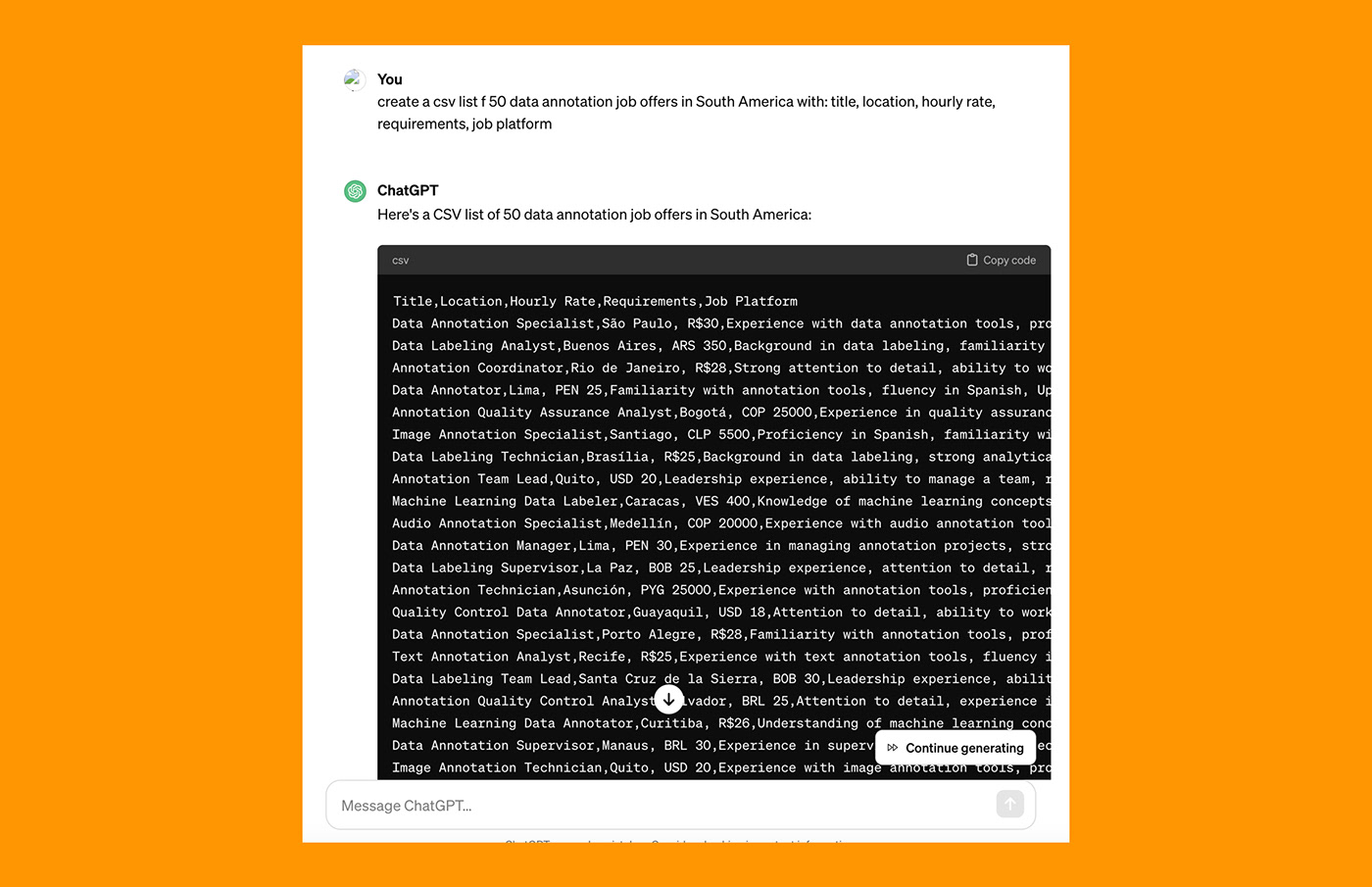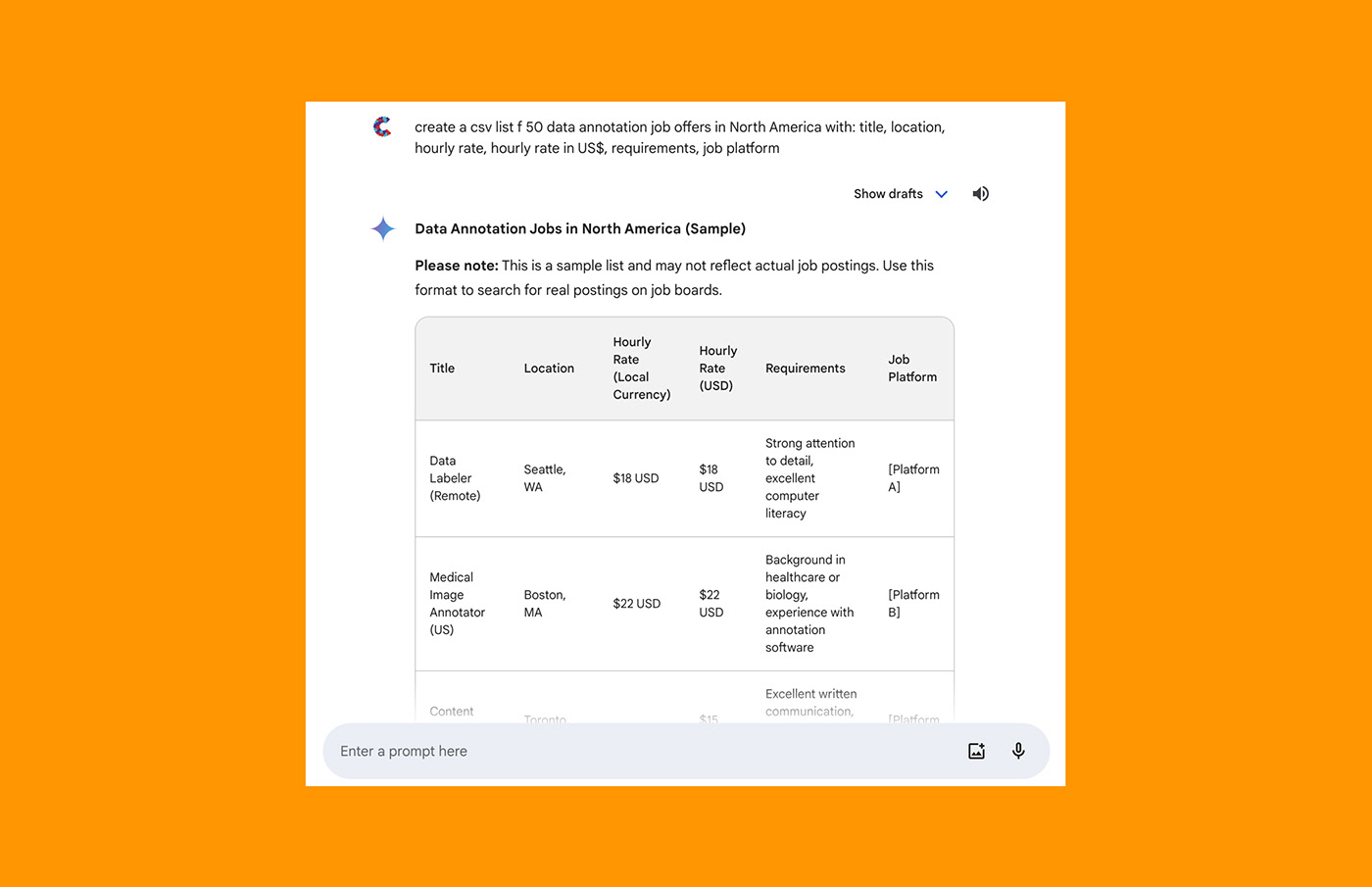
Humans In The Loop
Premise
This poster represents my contribution for a small exhibition about Artificial Intelligence that was supposed to happen in April 2024. The event won’t take place due to circumstances independent from the organisers. With their permission, I publish the work done so far, aiming to make a small addition to the ongoing discourse in AI.

HITL
In machine learning, Human In The Loop (HITL) involves using human input to help computers make accurate decisions when building models. Examples of HITL methods include adding labels to text, tagging images or objects within a video, annotating audio. These tasks are crucial but repetitive and mentally demanding. To manage the workload, businesses developing AI-based applications often outsource Data Annotators to third-party service providers for cost savings and faster turnaround times.

Research background
“Technical Data Analyst”, “Transcriptionist”, “Natural Language Processing Specialist”. You might have stumbled upon these job offers on platforms like Linkedin, Indeed, Upwork. They all promise remote work on a flexible term, above minimum pay rates, no professional experience required, and training provided by the company. What looks like an easy side hustle or part-time job, is actually the backbone for training data preparation and hence model training in machine learning. Data annotation (or data labeling) is an umbrella term encompassing tasks like tagging objects in images/videos, sentiment analysis of chatbot conversations, transcribing short videos, working on surveys, moderating content, cleaning databases or improving geolocation services. Often labeled as a click-work industry, it’s where precarious digital workers around the world perform dozens of micro-tasks online for AI companies.

In January 2023, Time magazine uncovered how OpenAI hired Kenyan workers on less than $2 per hour to make Chatgpt less toxic (1). According to the International Labour Organization, India makes up about a third of global online freelance workers, with developing nations accounting for about two-thirds of the total remote workforce (2). Outsourcing data labeling services is pretty common: data annotation companies with headquarters in Europe or America have offices in states like Brazil, India, Ghana, South Africa, Uganda, Colombia, etc. where the minimum wages are between $1 and $2. Most of these firms even claim to be Ethical AI companies because they help locals to get out of poverty.
The current debate in AI ethics revolves around data accountability and privacy. In November 2021, UNESCO adopted a document outlining Recommendations on the Ethics of Artificial Intelligence; more recently, in January 2024 the European Union released a package of measures to evaluate European startups and SMEs using AI (3). The framework, based on a risk-level approach, bans AI systems considered a clear threat to the safety, livelihoods and rights of people. If AI remains in the hands of societal groups that already possess significant power it can only exacerbate social inequalities and sustain existing unbalanced economic structures.

Technique
The poster is a list of data annotation job offers collected by ChatGPT, ordered by hourly rate. Tasked with identical prompts, Gemini (Google’s chatbot) and Microsoft CoPilot presented fictional or overly vague results. The design adopts a slanted layout to evoke a subtle feeling of discomfort.



Sources
(1) Exclusive: OpenAI Used Kenyan Workers on Less Than $2 Per Hour to Make ChatGPT Less Toxic, Time Magazine. Article by Billy Perrigo (2023)
(2) Digital labour platforms and the future of work: Towards decent work in the online world, International Labour Organisation (2018)
(3) EU Commission: AI Act (https://digital-strategy.ec.europa.eu/en/policies/regulatory-framework-ai, 2024)
Further readings:
- A New AI Lexicon: Labor by Julian Posada (https://ainowinstitute.org, 2023)
- Blind spots in AI ethics by Thilo Hagendorff (https://link.springer.com/article/10.1007/s43681-021-00122-8#additional-information, 2021)
